1. 数组的基本概念
1.1 什么是数组
数组是一组相同类型数据的集合
1.2 数组的定义与初始化
public class TestDemo {
public static void main(String[] args) {
// 1.
int[] arr2 = new int[]{1,2,3};
// 2.
int[] arr1 = {1,2,3};
// 3.
int[] arr3 = new int[3];
}
}在java中, 有3种定义数组的方式,如上代码
首先看1,int[] arr2 = new int[]{1,2,3};
int[] 表示数组中存储的数据类型是int整形,arr2为数组名,new int[]{1,2,3}表示创建一个数组对象,这个数组存储3个整形数据分别是1,2,3
2实际上与1是一样的,只是2在语法上简化了,为了方便使用
3和1类似,new int[3] 只是定义了数组长度,但是并没有对数组中的数据进行初始化
如果没有对数组进行初始化,数组中元素有其默认值,如下图
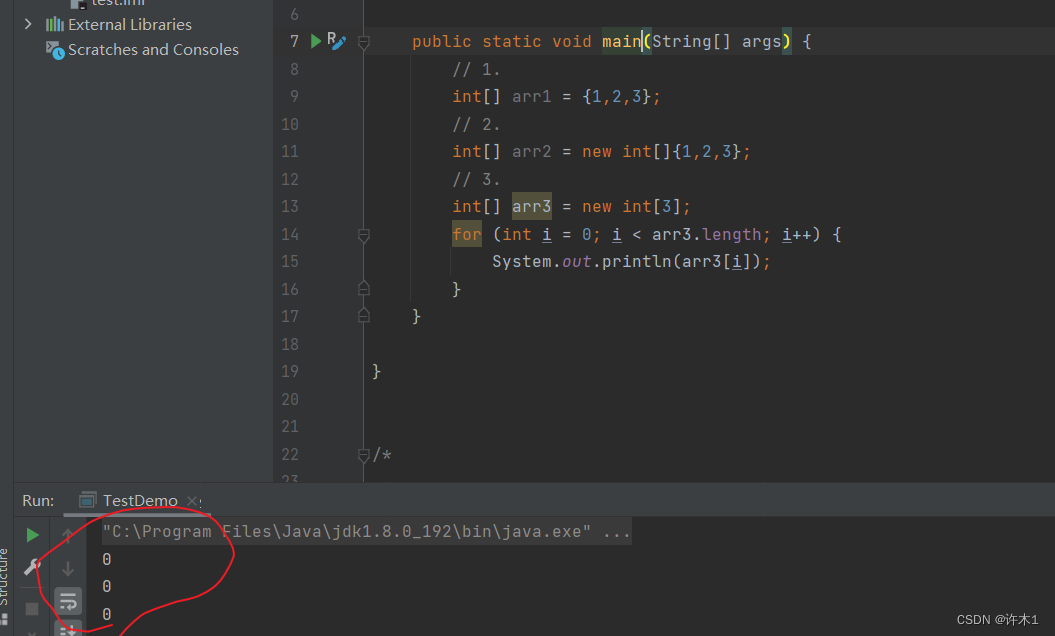
下面这张表是,如果数组中存储元素类型为基本数据类型,每个数组元素的默认值
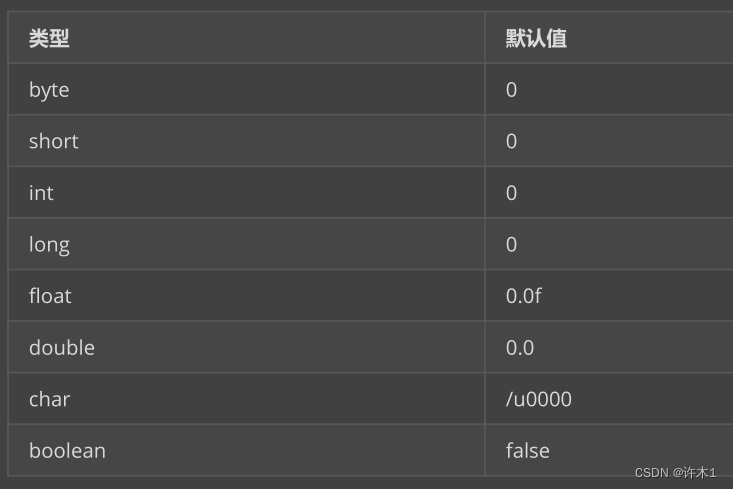
1.3 数组的使用
访问数组
与C语言相同,在java中可以使用[],对数组进行访问
public class TestDemo {
public static void main(String[] args) {
int[] arr2 = new int[]{1,2,3};
System.out.println(arr2[0]);
System.out.println(arr2[1]);
System.out.println(arr2[2]);
}
}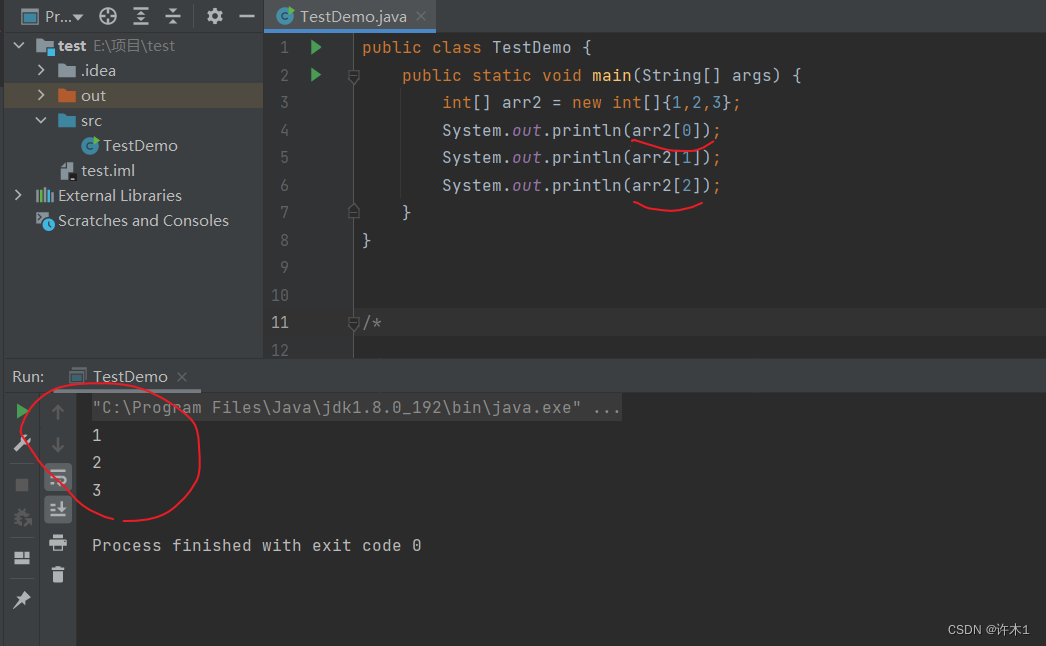
数组的遍历
下面介绍3种在java中遍历数组的方法
1. for循环遍历
public class TestDemo {
public static void main(String[] args) {
int[] arr = {1,2,3,4,5};
for (int i = 0; i < arr.length; i++) {
System.out.print(arr[i] + " ");
}
}
}这里需要注意的是,数组名.length就可以得到一个数组中元素的个数
2. for-each 遍历
public class TestDemo {
public static void main1(String[] args) {
int[] arr = {1,2,3,4,5};
/*for (int i = 0; i < arr.length; i++) {
System.out.print(arr[i] + " ");
}*/
for (int x : arr) {
System.out.print(x + " ");
}
}
}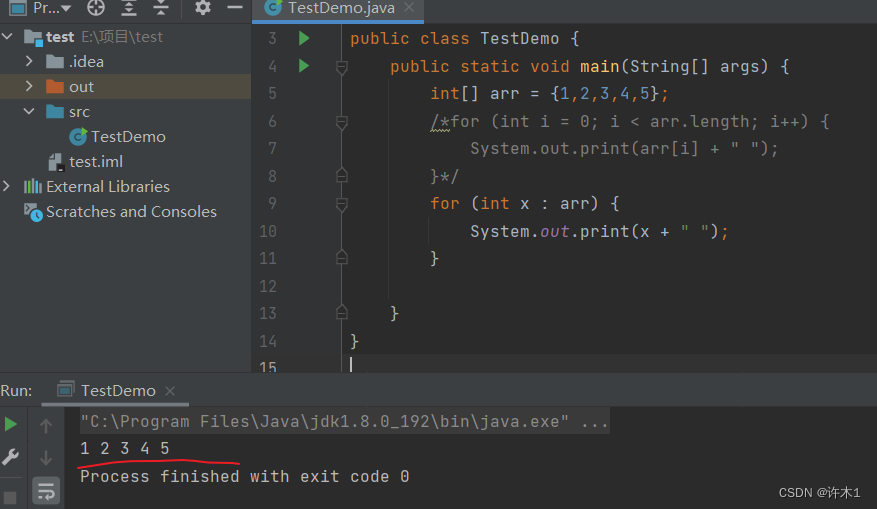
注意:for-each只适用于打印数组
3. 数组转字符串打印
import java.util.Arrays;
public class TestDemo {
public static void main(String[] args) {
int[] arr = {1,2,3,4,5};
/*for (int i = 0; i < arr.length; i++) {
System.out.print(arr[i] + " ");
}*/
/*for (int x : arr) {
System.out.print(x + " ");
}*/
String str = Arrays.toString(arr);
System.out.println(str);
}
}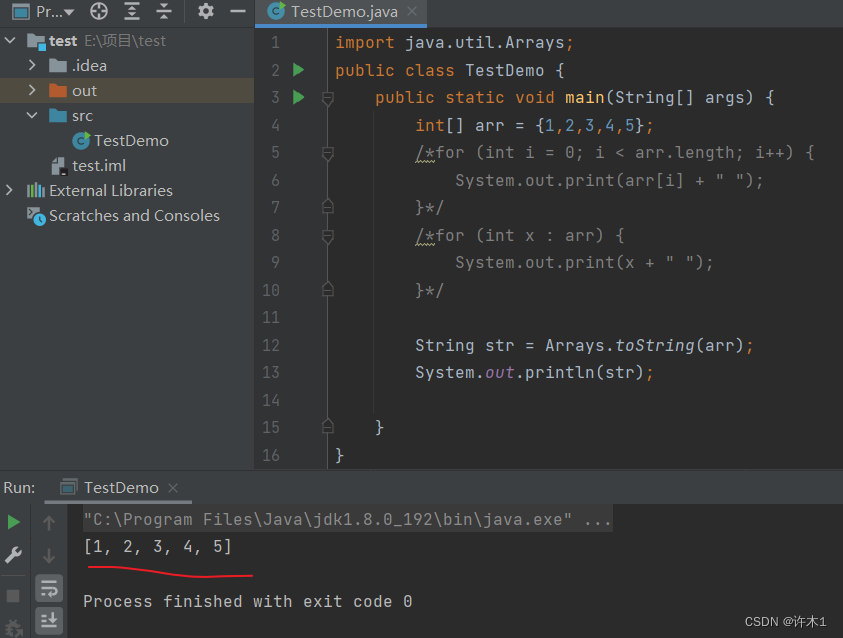
使用Arrays这个类中的toSring方法对数组arr转换为字符串进行打印
2. 引用
2.1 什么是引用
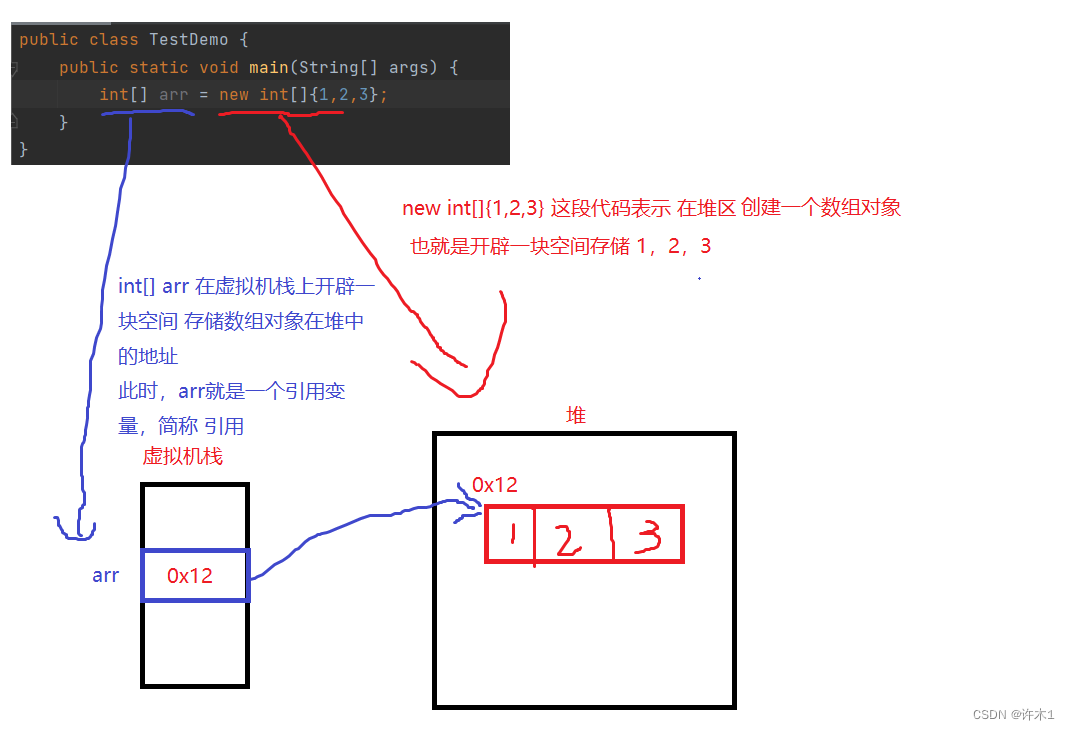
基本类型变量与引用类型变量的区别

2.2 例子
public class TestDemo {
public static void func() {
int[] array1 = new int[3];
array1[0] = 10;
array1[1] = 20;
array1[2] = 30;
int[] array2 = new int[]{1,2,3,4,5};
array2[0] = 100;
array2[1] = 200;
array1 = array2;
array1[2] = 300;
array1[3] = 400;
array2[4] = 500;
for (int i = 0; i < array2.length; i++) {
System.out.println(array2[i]);
}
}
public static void main(String[] args) {
func();
}
}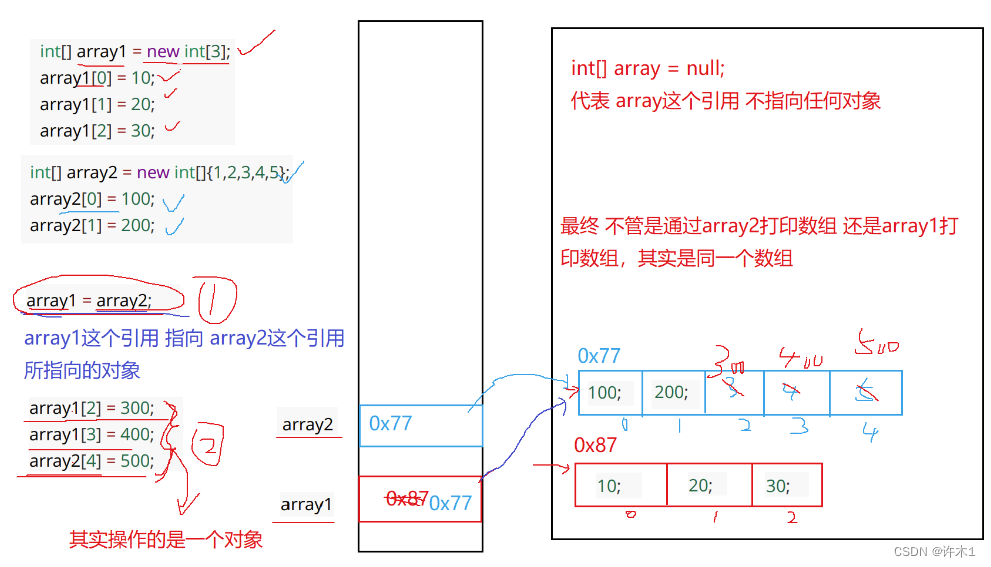
3. 数组传参
数组作为实参时,向方法内部传递的是引用变量存储的对象地址,如下图

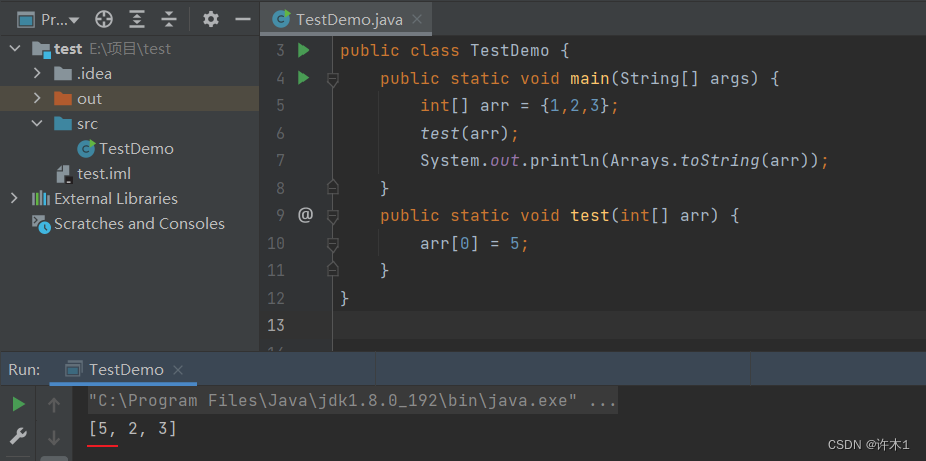
4. 二维数组
4.1 二维数组的定义
数据类型[][] 数组名称 = new 数据类型 [行数][列数] { 初始化数据 };
public class TestDemo {
public static void main(String[] args) {
int[][] arr1 = {{1,2,3},{4,5,6}};
int[][] arr2 = new int[][]{{1,2,3},{4,5,6}};
int[][] arr3 = new int[2][3];
}
}4.2 深入理解二维数组
二维数组实际上是一个特殊的一维数组

下面证明
public class TestDemo {
public static void main(String[] args) {
int[][] arr1 = {{1,2,3},{4,5,6}};
System.out.println(arr1[0]);
System.out.println(arr1[1]);
}
}
由于,二维数组存储的是数组对象的地址,所以二维数组在定义的时候,可以不指定列,但是一定得指定行,因为行指定二维数组存储多少个数组对象地址,如下所示
public class TestDemo {
public static void main(String[] args) {
int[][] arr = new int[2][];
arr[0] = new int[]{1,2,3};
arr[1] = new int[]{1,2,3,4,5};
}
}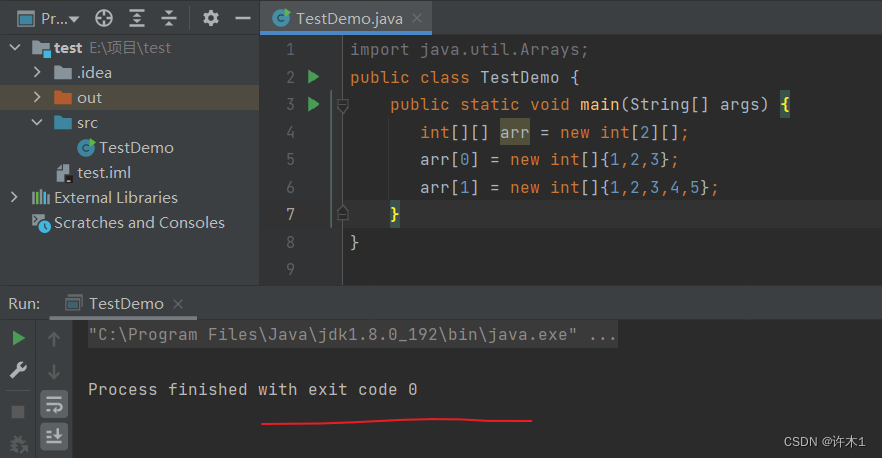
4.3 遍历二维数组
public class TestDemo {
public static void main(String[] args) {
int[][] arr = new int[2][];
arr[0] = new int[]{1,2,3};
arr[1] = new int[]{1,2,3,4,5};
for (int i = 0; i < arr.length; i++) {
for (int j = 0; j < arr[i].length; j++) {
System.out.print(arr[i][j] + " ");
}
System.out.println();
}
}
}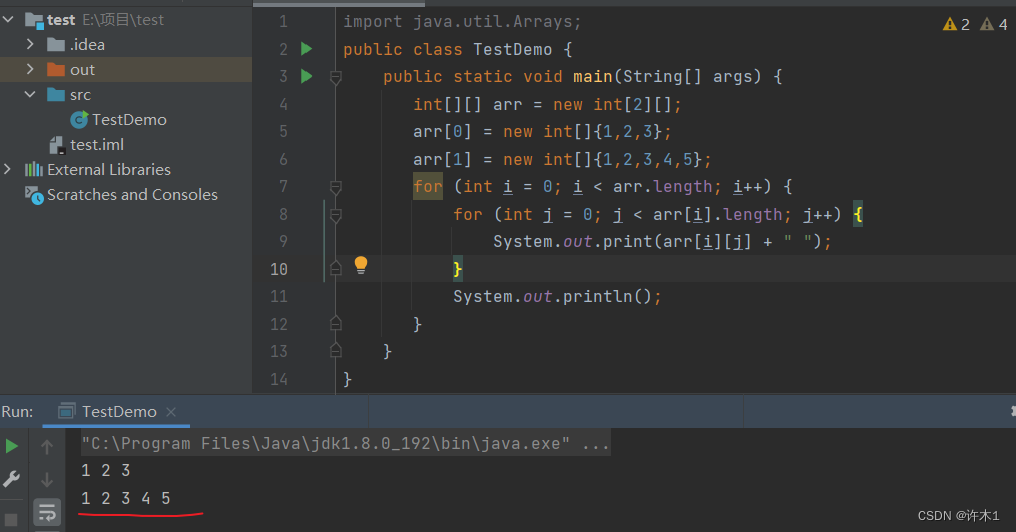























 165
165











 被折叠的 条评论
为什么被折叠?
被折叠的 条评论
为什么被折叠?








